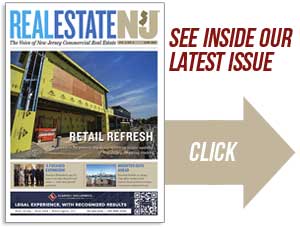By Michael G. McGuinness

NAIOP’s premier industry event this fall was CRE.Converge 2017 in Chicago, which attracted nearly 1,500 attendees from across North America. Held Oct. 10 to 12, the conference provided valuable insights into cutting-edge trends in the commercial real estate industry and projections for the future.
Several speakers shared stories about what contributed to their success — both personally and professionally. I was fortunate to hear Julie Benezet, founder and managing principal of Business Growth Consulting LLC, who built Amazon’s first global real estate organization and is credited with the strategic planning and delivery of over 7 million square feet worldwide (along with the supporting corporate infrastructure) in just two years. She shared her insights on bold leadership in the keynote session, “Navigating the New: Leading and Succeeding in the 21st Century.”
“There is much to be gained by stepping into the awkward space that can lead to great new ideas and initiatives,” Benezet said. It’s what helps separate management from true leadership. “Leadership,” she said, “is having an idea and bringing people along to make it happen.”
Change is constant in today’s world and business environment, and commitment to companies, careers and providers is conditional. “Competition for ideas, capital and talent is agnostic and global,” Benezet said. With the advent of the digital highway, all rules changed. When Amazon started in 1998, the internet had 200 million users. Today, it’s over 3.5 billion users. That means half the world can send information instantly. Being this hyperconnected means we are less in control and need to expect the unexpected. This force undoubtedly had an impact on the collapse of the subprime mortgage and more recently the U.S. national elections.
Hyperconnectivity is also impacting commercial real estate in a big way. Today’s consumers (many of them younger than us baby boomers), are very particular. They want a personalized touch and access to custom-made things (clothing, entertainment, food, etc.). The individual is king. They don’t want to pay for what they don’t need and are more open to sharing and leasing rather than owning property and gadgets. Ride sharing, coworking centers, customer experience, food and beverage choices and short-term commitments/leases are becoming mainstream. Many of these new behaviors were unknown a few years ago.
Examples of facing the unknown in commercial real estate include:
- Entering a blighted market where land is cheap, but paying tenants are hard to find.
- Restructuring your team to move someone into a senior leadership position.
- Meeting the new CEO of a key client who thinks brokers are useless, since rental rates can be found online and they have lawyers to do deals.
- Starting a conversation with someone who scares you to death, but whose brain power you desperately need to get you unstuck.
- Telling a business partner goodbye after he screwed up again, costing you major money.
Instead of trying to power through an unknown territory by sheer force of will, “open up your aperture to the broader experience,” Benezet said, and you might realize what factors are truly at play below a surface issue or situation.
An example: A financial report is behind schedule. Possible reasons behind the project’s delay may not be visible from the superficial perspective. Maybe the person who puts it together knows no one reads the report and they feel unmotivated to complete it on time. Or there may be a company culture of “shoot the messenger,” so the finance person doesn’t want to be the one to deliver any bad news. It pays to look deeper — and wider — at the problem to see what’s really happening and how it can be addressed moving forward.
Benezet shared four mileposts to help move through discomfort:
- Get comfortable with the scariness of risk — including reaching out to “unknown” people in the pursuit of goals instead of always turning to friendly or “known” people.
- Watch out for selfsabotaging behaviors, including micromanagement, personalizing, bullying and conflict avoidance.
- Find drivers to give you fuel — something that gives you purpose, either in the moment or as a core value.
- Pursue dreams to make life better — whether you are looking to satisfy your customer, team or community.
To be a leader in the 21st century, Benezet said: “Give yourself permission to be a little less cool; allow yourself permission to go into the awkward phase and go and do great things.”
Having said that, the “less cool” phase doesn’t last forever. This is especially true with municipalities that are transforming themselves into destinations for young talent, great jobs and quality of life. Frankly, the ultimate goal for redevelopment here in New Jersey’s communities should be to “become cool” and not do it in a haphazard way. Applying Benezet’s approach, this undertaking should include these key elements: (1) identify the stakeholders who need something better and learn about them; (2) experiment and accept failures along the way; (3) recalibrate as needed; and (4) be flexible and open-minded as to how you select your team. Assembling the right team after a much-thought-out strategy with the long-term goal in mind is essential. Just remember that it doesn’t happen overnight and you’ll need to move through some growing pains.
(Some of the content of this article appeared in a NAIOP blog post on Oct. 19, 2017, and was borrowed with permission.)
Michael McGuinness is CEO of NAIOP New Jersey and has guided the commercial real estate development association’s progress since he joined the staff in 1997. In addition to overseeing daily operations, programs and staff, McGuinness directs the chapter’s legislative activities and manages the Developers Political Action Committee (DPAC).










